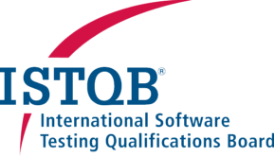 C4P Digital Transformation joined papier of IREB® and ISTQB®
C4P Digital Transformation joined papier of IREB® and ISTQB®

Digital Transformation is a fact and has impact on almost every aspect of our live. The software industry that is driving this transformation is not excluded from the impact. In the last 15 years, we have seen tremendous changes in the way people and organizations approach the digital transformation. The covid-19 pandemic has had and still has an additional impact on the way we work.
We, the IREB and the ISTQB, therefore believe, it is time to document this development.
With this call, IREB and ISTQB invite authors world-wide to contribute to our publication on working in the digital/software industry. The goal of this specific publication is to document the current state of the practice in terms of work organization.
Below, you will find potential categories for contributions. We seek for compact and lively articles that give insights into your organization and how they work. The expected size of a contribution is between 10.000 and 40.000 characters (including blanks).
The submission process consists of the following steps:
- Submission of an abstract until 2022/03/31
- Review and invitation to submit a full text until 2022/04/30
- Submission of the final contribution until 2022/06/30
- Notification of acceptance until 2022/08/30
The publication is planned for October 2022. The concrete format (online, print, ….) will be decided during the process depending on the number of submissions.
Please send your submissions to DigitalCompetencesPublication@ireb.org until 2022/03/31.
Categories for contributions:
- Good practices for project organization: Projects are an approach to manage a piece of work within a defined time and/or budget. In this category, we are searching for good practices for organizing project work. We are particularly interested in organizational structures in terms of locations, roles, events, documentation tools (e.g., use cases, models), and software tools. Furthermore, we are interested in your approach for selecting the right people for the defined roles.
- Good practices for department organizations: Beside projects, many organizations rely on dedicated departments for fulfilling work within the software life cycle. Good examples of such organizations are departments for Business Analysis/Requirements Engineering or Testing. In this category, we are searching for good practices for structuring work between different organizations. We are particularly interested in your way of organizing work (events, work products) and your way of defining job profiles in departments.
- Good practices for agile organizations: Beside projects and department organizations, agile processes (esp. scaled agile processes) are an important approach for organizing work within a company. In this category, we are searching for good practices for agile organizations. We are particularly interested in your way of structuring the agile organizations in terms of teams, events, and work products. Furthermore, we are interested in your approach for selecting people for particular jobs/roles/tasks and in your approach to qualify people, in particular for cross-functional work.
- Good practices for career paths: No matter what approach a company takes to structure work, career models and employee development are relevant topics. In this category, we are searching for good practices for defining career models and employee development. We are particularly interested in the structure of career paths (e.g., general paths, like consultant or software engineer vs. specialist paths, like tester, architect, developer, requirements engineer). Which levels do you use to reflect the seniority of a person? How do you quantify the level of seniority?
- Anything else: Your contribution idea does not fit with the previous categories? Please feel free to submit an abstract that explains your idea on a topic as soon as possible.
Please address as well questions like: What are important skills for a particular role or job profile? What part do certifications (e.g., in RE, testing, or others) play in employing people and staffing roles?
Final remark: We are looking for positive and negative experiences in the new ways of working. We are not seeking marketing presentations of a company. The goal of this publication is to collect an honest view on what is going on in industry. We know that this is a delicate request, but please be aware, that the value of this publication relies on every honest experience that will be published.
We are looking forward to your submission!
Kind regards

Most recent


